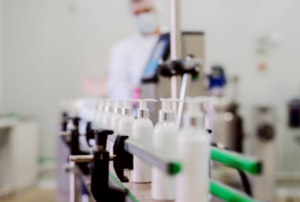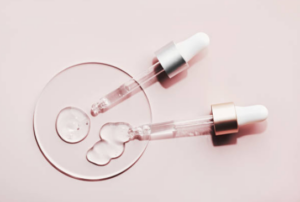Understanding the Role of Chemistry in Skincare

In the world of beauty and skincare, there’s a pervasive myth that has gained significant traction over the years—the idea of “chemical-free” beauty products. You may have seen it on product labels, heard it from influencers, or even encountered it in conversations with friends. The promise of “chemical-free” beauty sounds appealing, but there’s a fundamental problem with this concept: it’s scientifically inaccurate. In this comprehensive beauty blog, we will debunk the myth of “chemical-free” beauty and explore the crucial role of chemistry in skincare. By the end, you’ll have a deeper understanding of what goes into your skincare products and why embracing science is essential for effective, safe, and beautiful skin.
The Myth of “Chemical-Free” Beauty
In an era when consumers are becoming increasingly conscious of what they put on their skin, the idea of “chemical-free” beauty has gained significant popularity. This phrase, often emblazoned on product labels and used in marketing campaigns, is intended to convey purity, safety, and naturalness. However, upon closer examination, it becomes evident that this concept is based on a series of misconceptions.
1. The Chemical Composition of Everything
At its core, the term “chemical-free” is a misnomer. In reality, everything is composed of chemicals. The air we breathe, the water we drink, the food we consume, and even our bodies are composed of chemical substances. To label a product as “chemical-free” is to ignore this fundamental truth about the world we live in.
2. The Allure of Naturalness
The idea of “chemical-free” beauty often stems from a desire for products that are perceived as more natural and less synthetic. Consumers are drawn to the notion that these products are derived from nature and, therefore, must be safer and healthier. However, it’s crucial to recognize that natural substances can also have adverse effects on the skin, and not all synthetic ingredients are harmful.
3. The Fear of Harmful Chemicals
The term “chemical-free” plays into the fear of harmful synthetic chemicals in skincare products. While it’s true that some synthetic ingredients can be harsh or irritating, many undergo rigorous testing to ensure they are safe for use on the skin. Conversely, some natural ingredients can cause allergic reactions or skin sensitivities.
4. The Lack of Standardization
In the beauty industry, there is a notable lack of standardized definitions and regulations for terms like “chemical-free.” This ambiguity leaves consumers in a precarious position, as they may interpret such claims differently across various products and brands. Without clear guidelines, it’s challenging to make informed decisions about what you’re putting on your skin.
5. The Appeal to Greenwashing
Greenwashing is a marketing tactic in which a product is presented as more environmentally friendly or natural than it actually is. The term “chemical-free” can be a tool for greenwashing, as it suggests a level of purity that may not exist in reality. Consumers who prioritize eco-conscious and natural products may be misled by these claims.

6. The Role of Fear in Marketing
Fear is a powerful motivator in marketing, and the “chemical-free” label plays into this by exploiting concerns about synthetic chemicals. When consumers fear potential harm from these chemicals, they may be more inclined to choose products labeled as “chemical-free” without fully understanding the complexities of skincare formulation.
7. The Misleading Implication
The implication of “chemical-free” beauty is that products without this label contain harmful or unsafe ingredients. This is misleading and oversimplifies the science behind skincare products. In truth, product safety is determined by extensive testing and research, not the absence of chemicals.
The Science of Skincare: Chemistry at Work
Now that we’ve dispelled the myth of “chemical-free” beauty, let’s explore the critical role of chemistry in skincare. Understanding the chemistry behind your favorite products can help you make informed choices and demystify the ingredients list on the back of the bottle.
1. Active Ingredients
Skincare products often contain active ingredients designed to address specific skin concerns. These ingredients are carefully selected based on their chemical properties and their ability to interact with your skin. For instance, retinoids (such as retinol) are widely used to combat signs of aging. They work by promoting collagen production and encouraging skin cell turnover, leading to a smoother complexion.
2. Formulation Chemistry
The effectiveness of a skincare product depends on the formulation, which is a precise combination of various ingredients. Formulators, often chemists themselves, use their knowledge of chemistry to create stable, safe, and effective products. They consider factors like pH levels, emulsification, and ingredient compatibility to ensure that the product delivers the desired results without causing harm to the skin.
3. Preservatives
Preservatives are essential in skincare products to prevent the growth of harmful bacteria and molds. These preservatives are chemical compounds carefully chosen to ensure the product’s safety and longevity. Without them, skincare products could become breeding grounds for microorganisms, posing a risk to your skin.
4. pH Balance
The pH level of a skincare product is another aspect of chemistry that impacts its effectiveness and safety. Our skin has a slightly acidic pH, and skincare products are formulated to maintain this balance. The pH level affects how a product interacts with your skin and whether it can effectively deliver its active ingredients.
5. Understanding Ingredients
To make informed choices about your skincare, it’s crucial to understand the ingredients listed on the label. Here are some common skincare ingredients and their chemical properties:
- Hyaluronic Acid: A natural molecule found in our skin, hyaluronic acid is a powerful humectant that attracts and retains moisture. Its chemical structure allows it to hold up to 1000 times its weight in water, making it a hydration hero in skincare products.
- Salicylic Acid: This beta hydroxy acid (BHA) is known for its ability to exfoliate the skin by penetrating oil-filled pores. Its chemical structure allows it to dissolve in oil, making it effective in treating acne and improving skin texture.
- Vitamin C (Ascorbic Acid): Vitamin C is an antioxidant that helps protect the skin from oxidative stress caused by free radicals. Its chemical properties make it effective in brightening the complexion and reducing the appearance of dark spots.
- Glycolic Acid: An alpha hydroxy acid (AHA), glycolic acid is known for its exfoliating properties. Its small molecular size allows it to penetrate the skin’s surface, promoting cell turnover and improving skin texture.

6. Patch Testing
Given the complexity of skincare formulations and individual skin sensitivities, it’s essential to perform a patch test before using a new product. This involves applying a small amount of the product to a discreet area of your skin and monitoring for any adverse reactions. Patch testing allows you to assess how your skin reacts to the product’s ingredients and helps prevent potential allergies or irritations.
Navigating the Ingredients List
The ingredients list on the back of your skincare product can be overwhelming, but with a basic understanding of common skincare ingredients, you can make more informed choices. Here are some tips for navigating the ingredients list:
- Start with Active Ingredients: Look for the active ingredients that address your specific skin concerns. These are often listed toward the top of the ingredients list.
- Check for Allergens: If you have known allergies or sensitivities, scan the ingredients list for any potential allergens. Common allergens include fragrance, essential oils, and certain preservatives.
- Understand Concentrations: Ingredients are listed in descending order of concentration. That means the ingredients at the beginning of the list are present in higher quantities than those at the end. If a specific ingredient is touted as a key feature of the product, it should appear near the top.
- Be Cautious of Marketing Claims: Be skeptical of marketing claims like “chemical-free” or “natural.” Instead, focus on the specific ingredients and their properties.
Embracing the science of skincare doesn’t mean forsaking natural or organic products. It means making informed choices based on scientific evidence, understanding the role of chemistry in skincare, and appreciating the innovation and expertise that formulators and chemists bring to the industry. Here are some science-backed principles for a healthy skincare routine:
Skincare is not one-size-fits-all. What works for your friend may not work for you, and that’s okay. Consider factors like your skin type, concerns, and sensitivities when choosing products.
Skincare products often take time to deliver visible results. Be patient and consistent with your routine to allow your skin to adjust and improve gradually.

One of the most effective ways to protect your skin is by using sunscreen daily. Sunscreen is scientifically proven to prevent premature aging and reduce the risk of skin cancer.
If you have specific skin concerns or conditions, consider consulting a dermatologist or skincare professional. They can provide personalized advice and recommend products or treatments tailored to your needs.
The myth of “chemical-free” beauty has perpetuated misunderstandings about skincare products and the role of chemistry in achieving healthy, beautiful skin. In reality, chemistry is at the heart of effective skincare, from formulating products to understanding ingredient interactions. By embracing the science of skincare and making informed choices based on evidence, you can navigate the beauty industry with confidence, prioritize your skin’s health, and achieve the radiant complexion you desire. In the end, it’s not about whether a product is “chemical-free” but whether it’s safe, effective, and tailored to your unique skincare needs.

